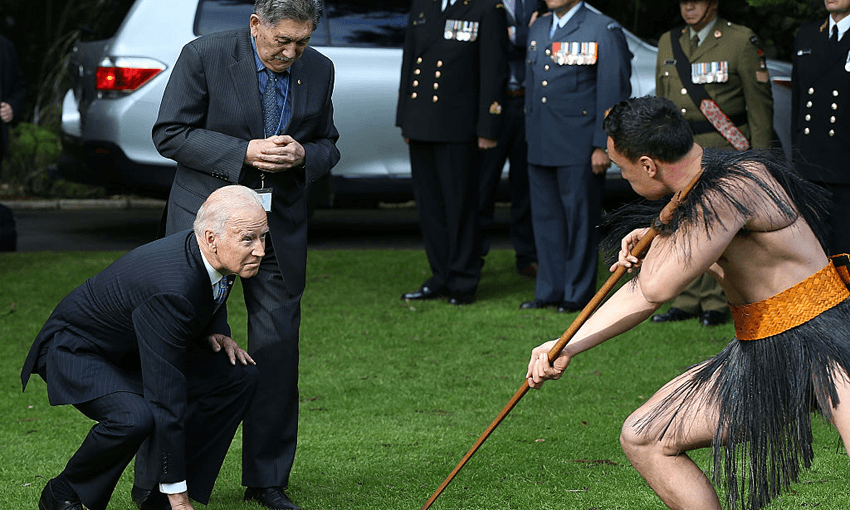From re-engaging with the Paris Agreement to reducing tensions with China, there are a number of things New Zealand will be hoping to see from the US under a President Joe Biden, writes Stephen Jacobi.
The American people have spoken. America’s “better angels” have prevailed. We all hope for better times ahead, but, while there is ample scope to expand co-operation with a Biden Administration in the White House, the future is unlikely to be all plain sailing.
The state of the relationship
The importance of the United States in international affairs is such that it is in New Zealand’s interest to co-operate with whoever occupies the White House. The US-New Zealand relationship has continued to expand over the last four years. High-level contacts have continued, although the prime minister herself has not yet made the customary visit to Washington. Security and defence relations are closer now than at any other time. New Zealand and the US continue to be “very, very, very good friends”.
Trade has flourished, even in the absence of a free trade agreement. Consumer demand for our products probably increased as a result of the economic stimulus flowing from the Trump Administration’s tax cuts. Even Covid-19 has not made a dent in the trade figures. True, the Administration disappointed us (and this writer in particular) on the Trans-Pacific Partnership (TPP), and continues to apply tariffs on our steel and aluminium exports, but with the Kiwi Act it gave us visas for investors and entrepreneurs.
New Zealand has not been immune from the fallout from the US-China trade war which has cast a shadow over the global economy. We have also been concerned about US policies towards the World Trade Organisation (WTO), as well as multilateralism more generally, including, most importantly, withdrawal from the Paris Agreement on Climate Change. The approach to Iran and North Korea has been perplexing. Co-operation in science, technology and education have all advanced, and our space co-operation has literally blasted off.
What do we want at this point?
There are a number of things that the Ardern government might like to see from the US under a Biden Presidency, including:
- Re-engagement in multilateral institutions, including the Paris Agreement and the WTO
- Reduction of tension with China and re-alignment with Asia more generally
- Partnership on global political, economic and environmental issues affecting us both
- Openness towards trade and investment.
Some of these seem assured given the Biden/Harris policy pronouncements, while others will take time to eventuate: the processes required to get a new administration up and running are labyrinthine by New Zealand standards. It will take time to re-orient the ship of American policy. New Zealand will need to take its turn, although our chairing of APEC in 2021 will give us some useful early opportunities to engage.
What about trade?
We should not expect any early moves towards joining the Comprehensive and Progressive Agreement on Trans-Pacific Partnership (CPTPP). There are competing views on trade and president-elect Biden cannot be expected to want to disturb the Sandernistas in his party, at least not straightaway.
A bilateral FTA is no more likely in our view. We have been down this path before, with both Republican and Democrat Administrations. Somehow, no matter the quality of our friendship, we can never get the right conditions to allow an FTA to proceed. That’s because we offer the Americans only a small market and our asks of the US are not without consequence domestically. You only have to look at the importance of Wisconsin in the recent election to see that no favours affecting American dairy farmers are likely to be done for New Zealand. The whole strategy with TPP – now CPTPP – was that the prospect of a bigger deal might serve to outweigh these domestic concerns. As it turned out, TPP delivered only marginal agricultural market access and the Obama Administration was unable to get it passed through Congress.
The US may take a less aggressive stance on the WTO and New Zealand and the US could well co-operate on reforms aimed at improving the dispute settlement system rather than seeking to undermine it. A return of US global leadership on trade is to be welcomed by New Zealand. The multilateral trading system was after all one which the US helped build.
Another area we can expect some welcome evolution in policy is in relation to China. Although the Trump Administration’s tariffs have undeniably hurt America more than China, the perception of China as a strategic competitor cuts across the political divide. We would expect a Biden Administration to continue to contest China’s economic, political and technological rise, but the policy could be pursued in a less confrontational way. That may not however lessen demands being made of very good friends like New Zealand.
What’s next?
New Zealand and the United States have many shared interests, but America remains very divided, in the grip of a health and economic crisis and an “America first” movement has not gone away. New Zealand has long pursued an independent foreign policy, but we value opportunities to work together. The relationship will continue to require close attention in the years ahead from Ardern, Foreign Minister Nanaia Mahuta and Trade Minister Damien O’Connor.
Stephen Jacobi is executive director of the NZ International Business Forum and former executive director of the NZ US Council.





